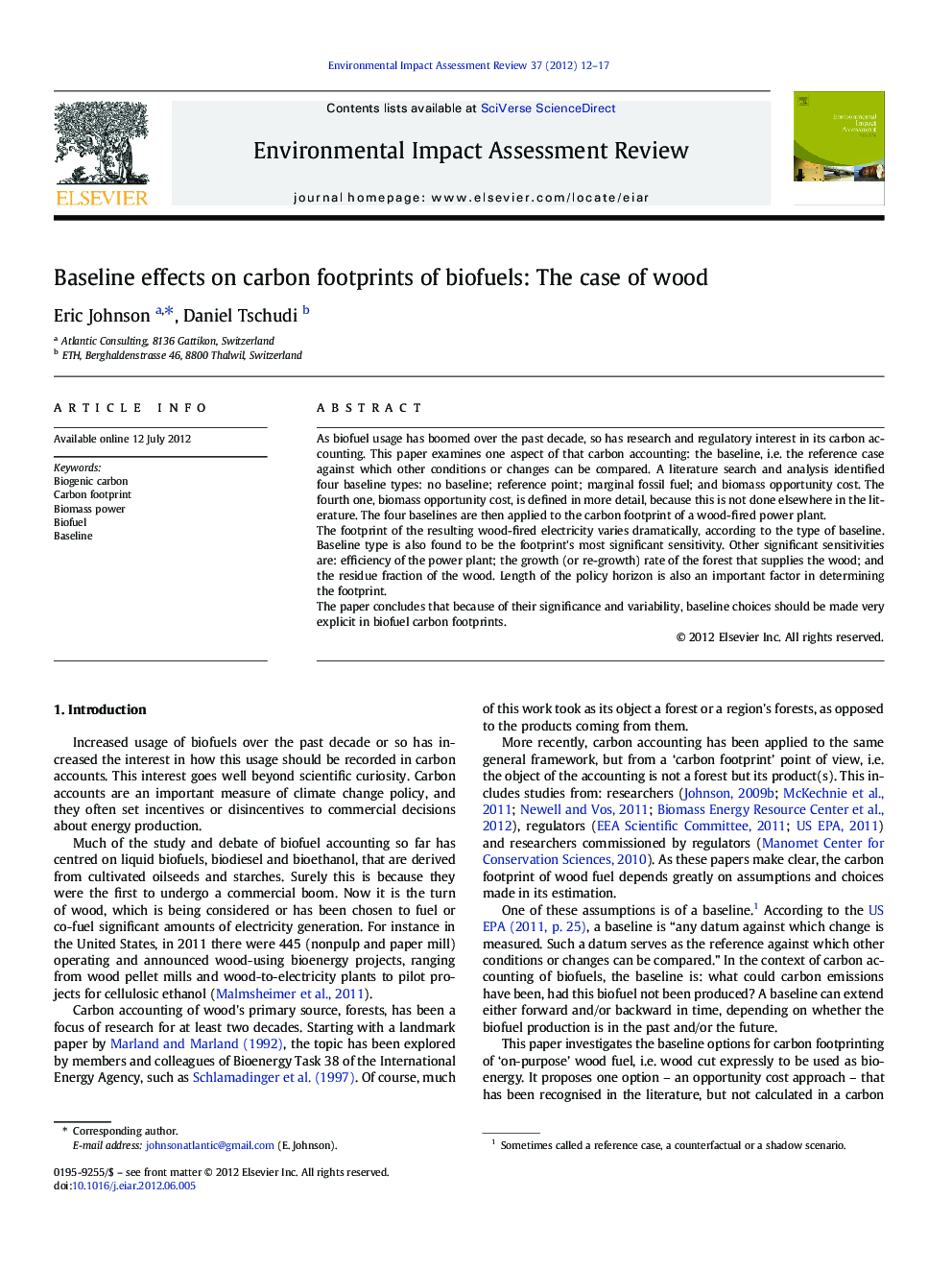| Article ID | Journal | Published Year | Pages | File Type |
|---|---|---|---|---|
| 1052876 | Environmental Impact Assessment Review | 2012 | 6 Pages |
As biofuel usage has boomed over the past decade, so has research and regulatory interest in its carbon accounting. This paper examines one aspect of that carbon accounting: the baseline, i.e. the reference case against which other conditions or changes can be compared. A literature search and analysis identified four baseline types: no baseline; reference point; marginal fossil fuel; and biomass opportunity cost. The fourth one, biomass opportunity cost, is defined in more detail, because this is not done elsewhere in the literature. The four baselines are then applied to the carbon footprint of a wood-fired power plant.The footprint of the resulting wood-fired electricity varies dramatically, according to the type of baseline. Baseline type is also found to be the footprint's most significant sensitivity. Other significant sensitivities are: efficiency of the power plant; the growth (or re-growth) rate of the forest that supplies the wood; and the residue fraction of the wood. Length of the policy horizon is also an important factor in determining the footprint.The paper concludes that because of their significance and variability, baseline choices should be made very explicit in biofuel carbon footprints.
► Four baseline types for biofuel footprinting are identified. ► One type, ‘biomass opportunity cost’, is defined mathematically and graphically. ► Choice of baseline can dramatically affect the footprint result. ► The ‘no baseline’ approach is not acceptable. ► Choice between the other three baselines depends on the question being addressed.
